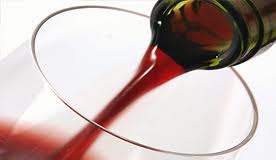New players entering the market and greater focus and investments in advertising and marketing campaigns intensified competition in the market place. The market has witnessed an unprecedented increase in wine sales through the Internet over the past few years. Although conventional wine producing European countries such as France, Spain and Italy still dominate the global market, they are facing stiff competition from new world wine regions like China and Australia, to name a few, which are progressing at a rapid pace with large-scale production, clever marketing strategies and competitive pricing. Regions including the US, Australia, Chile, New Zealand, South Africa and Argentina increased their combined share in the world market from 23% in 2005 to 30% by the end of 2008. With the availability of improved, latest technical know-how and equipment the new world regions are able to consistently produce good quality wines. Presently, the market is reeling under intense price pressures, triggered by rising competition and global oversupply. The global market for wine witnessed a slowdown in growth during the recessionary years 2008 and 2009. The economic crisis and the subsequent deceleration in consumption, which added to the already existing problem of over production, adversely affected the global wine industry. The sharp decline was primarily attributed to a drastic reduction in consumption in the European Union, the largest market for wines worldwide. Maximum declines were witnessed in Spain and France while outside Europe, it was the US that recorded the highest decline. Developed markets of the US and Europe were more affected than the emerging markets of Asia-Pacific, Latin America, Eastern Europe and Australasia. During 2009, global grape production also fell. Segment wise, Champagne recorded the highest decline in volume as well as value sales in 2009. Champagne exports declined by 45% in terms of value and 40% in terms of volume during 2009. While the world’s major wine consuming region, Europe takes a back seat with consumption in major countries, such as France, slowing down, Asia-Pacific, driven by China is poised to grab large chunk of Europe’s share in the foreseeable future. The economic downturn also led to the trend of consumers readily trading down to cheaper wine varieties, shunning the more exclusive, expensive wines. The wine industry reverted back on the path of gradual recovery, beginning 2010, with improved revival trends reported by global suppliers. Despite poor harvests in some of the major supplying nations, the average per bottle price managed to show improvement. The year 2010 also witnessed improvements in the export and import scenario in line with the improving global economy. Europe positions itself as the single largest consumer and producer of wines, amassing a lion’s share of the worldwide market, as stated by the new research report on Wine. European countries including France, Spain and Italy capture the majority share of wine production in the region. Next to Europe, the US and Asia-Pacific rank as the other most significant wine consumers and producers worldwide. Wine industry in Asia-Pacific remained buoyant even during the volatile economic recession, and is projected to register the overall fastest growth both in terms of volume and value terms through 2015. The rapidly emerging economy in the region, China, is slated to witness an unprecedented increase in wine consumption and is poised to become a major contender in the global wine industry in future. By product group, the Still Wine category completely dominates the wine market in terms of sheer size. However, with respect to growth pace, Fortified Wine segment is expected to lead the way for the assessment period 2007-2015. (You can reach the writer at info@vitabella.fr)
Global Wine Market to Reach 26.12 Billion Liters by 2015, According to a New Report by Global Industry Analysts, Inc.

According to Global Industry Analysts, Inc., a publisher of off-the-shelf market research, Wine – the niche category in the alcoholic beverages market – is headed towards a healthy future with a steady growth forecast over the review period. The underlying health benefits of wine would also enable the segment to encroach the markets of beer and spirit, the other two segments. Recent research findings confirm the fact that moderate consumption of wine prevents heart disease, cancer, Alzheimer’s disease as well as muscular degeneration. High publicity received by these findings is spurring consumption of wine at home and at horeca (hotels, restaurants and cafes) outlets, particularly in non-wine producing countries. Developing countries like Russia, China, Australia and India, to name a few, are expected to drive future growth in the market. Changing lifestyles in these countries, which mostly mimic Western lifestyles, is proving to be a major win for the growth in wine consumption. Previously, interest in wines was confined to middle-aged customers, today a growing base of younger consumers are exhibiting a marked preference for wine over other alcoholic beverages.


